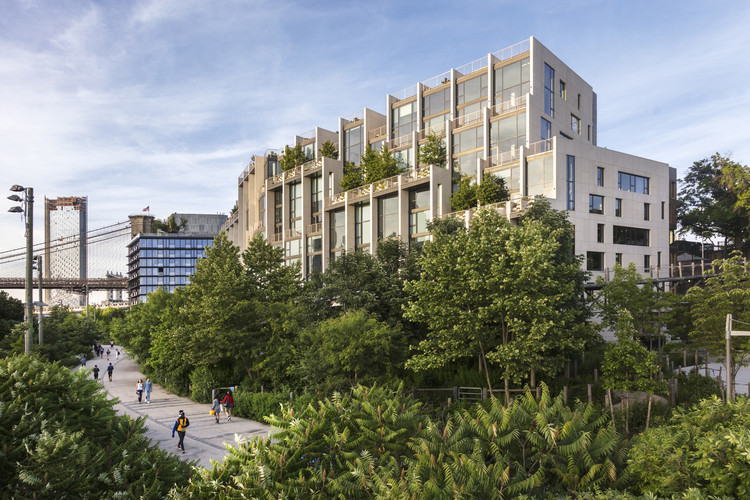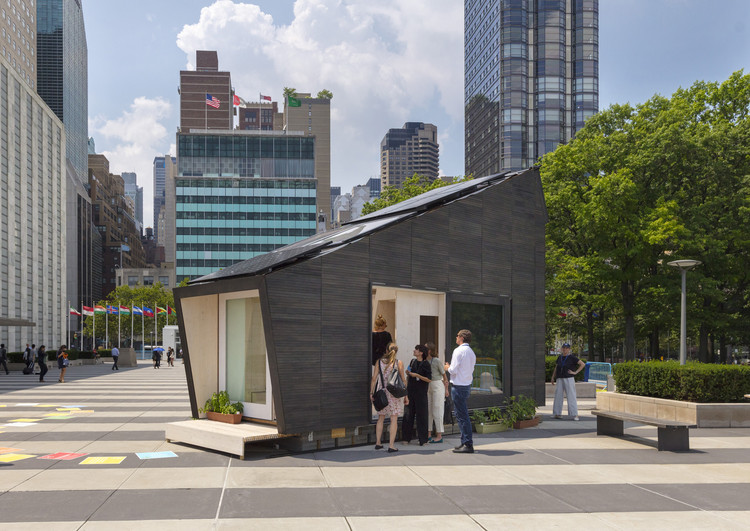
-
Architects: Pickard Chilton
- Area: 1080000 ft²
- Year: 2017
-
Professionals: Magnusson Klemencic Assoicates, Alvine Engineering, OJB Landscape Architecture, Lend Lease




Under the latest round of NYC's Department of Design and Construction (DDC) Project Excellence Program, Commissioner Thomas Foley has announced that the agency has selected 20 firms to provide architectural design services for New York City’s future public buildings project. 10 of the selected firms are certified Minority- and Women-Owned Business Enterprises (M/WBEs), meeting the city’s ambitious goals of supporting M/WBEs and increasing its ability to generate culturally competent designs.

With growing awareness of the impact of fossil fuels on the natural environment and their common usage in buildings, architects are increasingly required to specify and accommodate alternative energy sources in their design approaches. Included in this portfolio of progressive energy sources is biomass, a scalable system that combines the usage of raw, sustainable materials with a lower resulting emission of CO2. As a method often heralded as the most transferable alternative to gas and coal, we answer a simple question: what is biomass energy?

Building Information Modeling (BIM) is an increasingly common acronym among architects. Most offices and professionals are already migrating or planning to switch to this system, which represents digitally the physical and functional characteristics of a building, integrating various information about all components present in a project. Through BIM software it is possible to digitally create one or more accurate virtual models of a building, which provides greater cost control and efficiency in the work. It is also possible to simulate the building, understanding its behavior before the start of construction and supporting the project throughout its phases, including after construction or dismantling and demolition.





In an effort to spark public discussion and new ideas on how sustainable design can manifest as decent, affordable housing, Yale University has collaborated with UN Environment and UN-Habitat to unveil a “tiny house” fully powered by renewable energy. At 22-square-meters, the eco-house is designed to “test the potential for minimizing the use of natural resources such as water.”
The prototype was unveiled during the United Nations High-Level Political Forum on Sustainable Development, constructed from locally-sourced, bio-based renewable materials. While the first prototype is designed for the climate and context of New York, future iterations can be adapted for site-specific conditions around the globe. Design and fabrication of the module was carried out by Gray Organschi Architecture, working in direct partnership with the Yale Center for Ecosystems in Architecture.




The American Institute of Architects (AIA) have named 18 architectural and interior projects as recipients of the 2017 Institute Honor Awards, the profession’s highest recognition for excellence in design.
According to the AIA, “the 2017 Architecture program celebrates the best contemporary architecture regardless of budget, size, style, or type. These stunning projects show the world the range of outstanding work architects create and highlight the many ways buildings and spaces can improve our lives.”
The awarded projects were selected from nearly 700 submissions. The winners will be honored at the 2017 AIA National Convention in Orlando.

The American Institute of Architects (AIA) have announced the recipients of the 2015 Housing Awards. Currently in its 15th year, the awards are designed to “recognize the best in US housing design” and “promote the importance of good housing as a necessity of life, a sanctuary for the human spirit and a valuable national resource.” This year, the jury awarded ten designs in three categories. See them all, after the break.
